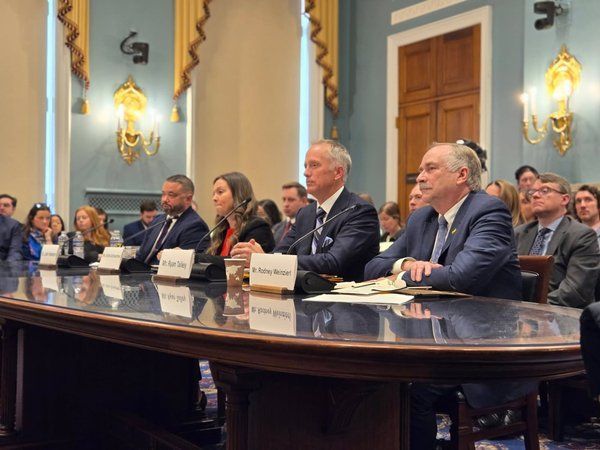Hartman, Weinzierl Testifies for the Future of Farming
Lyndi Allen
National Corn Growers Association’s President, Kenneth Hartman Jr., testified before the Senate of Agriculture Committee in Washington D.C., on Wednesday, February 5th, 2025. In the following week, IL Corn’s Executive Director and Illinois farmer, Rodney Weinzierl, testified before the House of Agriculture Committee in Washington, D.C., on Tuesday, February 11th, 2025. In addition to presenting their testimonies, they sat before the committees to answer questions and further advocate for Illinois farmers and the future of agriculture.
Hartman highlighted the urgent economic pressures that farmers face and proposed policy solutions to protect the future of farmers. Watch Hartman’s full testimony (02:02:033).
Key takeaways:
- Farm Economy Challenges: Financial struggles for farmers due to declining crop prices and rising input costs
- Farm Bill Priorities: An updated five-year farm bill that increases baseline funding for farm programs is crucial for unifying nutrition and farm programs as well as strengthening Title I safety net
- Tax Policy Concerns: If Congress does not extend provisions from the Tax Cuts and Jobs Act, famers may face tax increases
- Ag Workforce Crisis: Labor shortages continue to be a major issue, driving up costs and putting family farms at risk
- Crop Protection: The need for science-based regulatory approaches to ensure farmers have access to essential crop protection products, fertilizers, and biotechnology
- Trade and Market Access: Strengthening export markets is necessary to sustain U.S. farm incomes and the agricultural economy Weinzierl highlighted the urgent economic challenges facing family farms and proposed policy solutions to secure the next generation of farmers.

Key takeaways:
- Farm Economy in Crisis: Input costs remain high while corn demand is stagnant, forcing farmers to rely on off-farm income
- Corn Demand Concerns: Ethanol, livestock, and exports must see renewed investment; without action, farmers face a bleak outlook
- Input Costs Out of Control: Fertilizer prices are not tied to production costs, squeezing farm profitability; transparency is needed
- Trade and Export Growth Needed: U.S. agriculture trade faces a $42.5 billion deficit in 2025—expanding international markets is critical
- Farm Bill and Crop Insurance Reform: Inequities in crop insurance and outdated Title I programs must be addressed for Midwest farmers to compete fairly.
IL Corn remains committed to ensuring Illinois farmers have a strong voice in Washinton, D.C., working to update policies that improve economic stability and growth.






